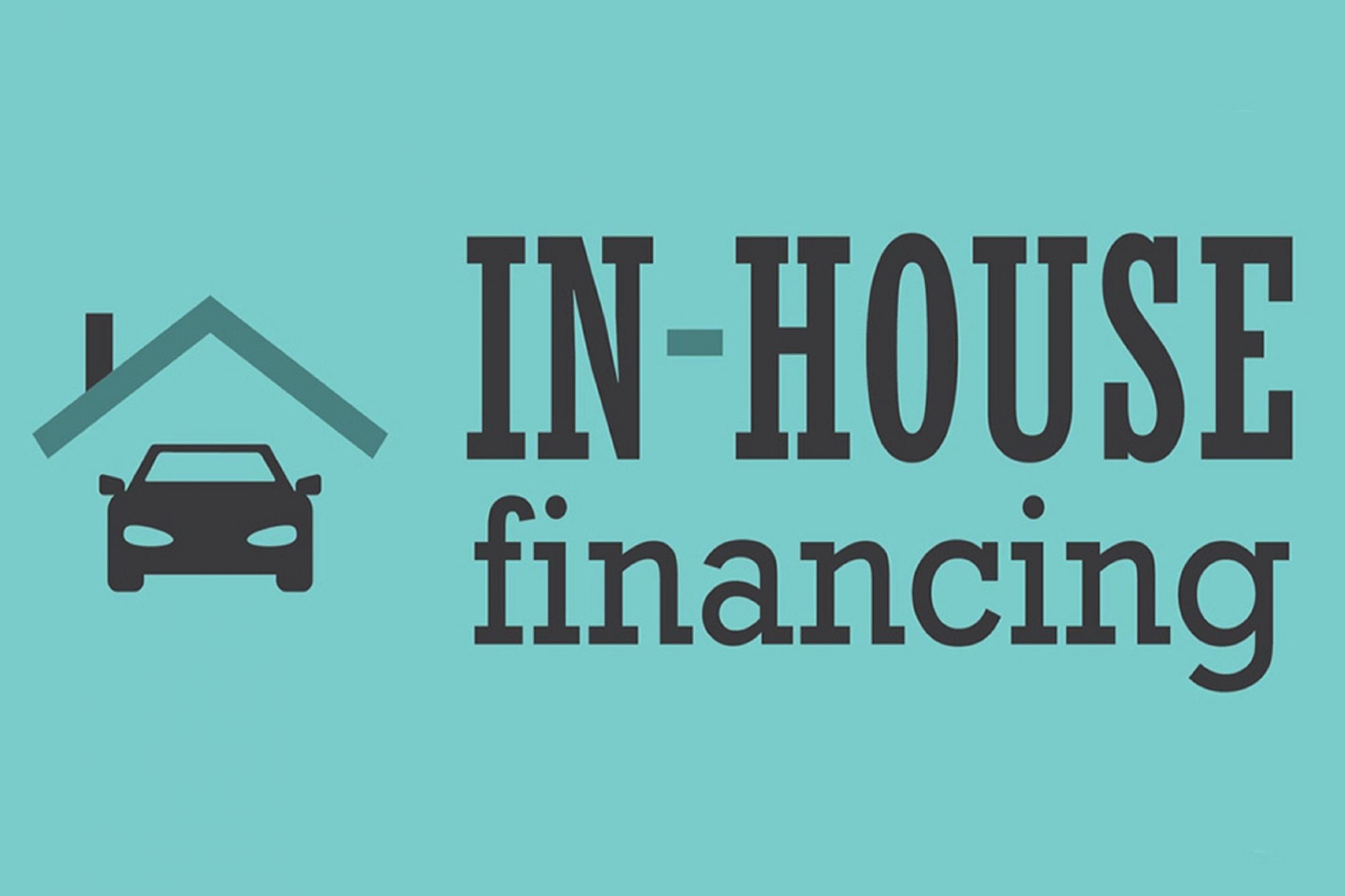In today’s ever-evolving financial landscape, consumers are constantly seeking innovative ways to secure funding for their ventures. One such method that has gained significant traction in recent years is in-house financing. This article delves into the intricacies of in-house financing, exploring its advantages, disadvantages, working mechanisms, and future prospects.
In-house financing, also known as seller financing or buy-here-pay-here, refers to a financing arrangement where the seller of a product or service provides credit to the buyer. Unlike traditional loans facilitated by banks or financial institutions, in-house financing cuts out the middleman, allowing for a direct transaction between the buyer and the seller.
Advantages of In-House Financing
In-house financing offers several advantages that make it an attractive option for both buyers and sellers. Firstly, it provides flexibility in approval, as sellers are often more lenient in their eligibility criteria compared to banks. This means individuals with less-than-perfect credit scores or limited financial history may still qualify for financing.
Moreover, in-house financing typically involves faster processing times. Since the transaction occurs directly between the buyer and the seller, there is less paperwork and bureaucracy involved, resulting in expedited approval and disbursement of funds.
Another significant advantage of in-house financing is the opportunity for tailored solutions. Sellers have the flexibility to customize financing terms based on the buyer’s needs and financial situation. This personalized approach can result in more manageable repayment plans and better overall satisfaction for the buyer.
Disadvantages of In-House Financing
However, despite its benefits, in-house financing also comes with its share of drawbacks. One of the most notable disadvantages is the higher interest rates associated with such arrangements. Since sellers are taking on additional risk by extending credit directly to buyers, they often charge higher interest rates to compensate for this risk.
Additionally, in-house financing may offer limited options compared to traditional loans. Buyers may find themselves restricted to the products or services offered by a particular seller, limiting their ability to shop around for the best deal.
How In-House Financing Works
Understanding the mechanics of in-house financing is crucial for both buyers and sellers. The process typically involves several steps, starting with the buyer expressing interest in financing a purchase from the seller.
Eligibility criteria for in-house financing vary depending on the seller’s policies. However, common requirements may include proof of income, employment verification, and a minimum down payment.
Once the buyer’s eligibility is confirmed, the seller outlines the financing terms, including the interest rate, repayment period, and any additional fees. Upon mutual agreement, the buyer and seller enter into a financing agreement, outlining their respective obligations and rights.
Throughout the repayment period, the buyer makes regular payments to the seller, often on a monthly basis. Failure to adhere to the terms of the agreement may result in penalties or, in severe cases, repossession of the financed asset.
Comparing In-House Financing with Traditional Loans
It’s essential to compare in-house financing with traditional loans to understand the differences and determine which option best suits individual needs.
One key difference is the source of funding. Traditional loans are typically provided by banks or financial institutions, whereas in-house financing involves direct funding from the seller.
In terms of advantages, traditional loans may offer lower interest rates and more extensive product offerings. However, they often come with stricter eligibility criteria and longer processing times compared to in-house financing.
On the other hand, in-house financing provides greater flexibility and faster approval, making it a preferred choice for individuals with less-than-perfect credit or those seeking a quick financing solution.
Tips for Choosing the Right In-House Financing Option
When exploring in-house financing options, it’s essential to conduct thorough research and consider several factors before making a decision.
Firstly, researching different providers and their financing offerings can help buyers identify the best fit for their needs. It’s essential to compare interest rates, repayment terms, and any additional fees associated with each option.
Understanding the terms and conditions of the financing agreement is also crucial. Buyers should carefully review the contract, paying close attention to interest rates, repayment schedules, and any penalties for late payments or early repayment.
Lastly, negotiating terms with the seller can often lead to more favorable financing terms. Buyers should not hesitate to discuss their needs and preferences with the seller and seek to reach a mutually beneficial agreement.
Case Studies: Success Stories with In-House Financing
To illustrate the effectiveness of in-house financing, let’s explore a couple of real-life success stories.
John, a small business owner, was struggling to secure funding for a new piece of equipment needed to expand his operations. Unable to qualify for a traditional loan due to his limited credit history, John turned to in-house financing offered by the equipment supplier. With flexible terms and quick approval, John was able to acquire the equipment he needed to grow his business successfully.
Sarah, a first-time homebuyer, found her dream home but lacked the necessary down payment to secure a mortgage. Through in-house financing provided by the seller, Sarah was able to negotiate a manageable down payment and affordable monthly payments. This enabled her to purchase her home without the need for a traditional bank loan.
Risks and Precautions Associated with In-House Financing
While in-house financing can be a valuable tool for securing funding, it’s essential to be aware of the risks involved. One significant risk is defaulting on the financing agreement, which can result in repossession of the financed asset and damage to one’s credit score.
Moreover, since in-house financing often involves higher interest rates, buyers may end up paying more in interest over the life of the loan compared to traditional financing options.
To mitigate these risks, buyers should carefully review the terms of the financing agreement, ensure they can afford the payments, and prioritize timely repayment to avoid default.
Future Trends in In-House Financing

Looking ahead, several trends are shaping the future of in-house financing. Technological advancements are streamlining the application and approval process, making it even more accessible and convenient for consumers.
Moreover, market predictions suggest that in-house financing will continue to gain popularity, particularly in niche markets where traditional financing options may be limited.
Overall, the future of in-house financing looks promising, with innovations and evolving consumer needs driving its growth and adoption.
Conclusion
In-house financing offers a unique alternative to traditional loans, providing flexibility, speed, and tailored solutions for both buyers and sellers. While it comes with its share of advantages and disadvantages, understanding the intricacies of in-house financing can help individuals make informed decisions and secure funding for their ventures.
FAQs (Frequently Asked Questions)
Is in-house financing only available for certain types of purchases?
In-house financing can be used for various purchases, including vehicles, real estate, equipment, and more. However, availability may vary depending on the seller and the nature of the transaction.
How does in-house financing affect my credit score?
In-house financing may have a positive or negative impact on your credit score, depending on your repayment behavior. Timely payments can improve your credit score, while defaults can damage it.
Can I negotiate the terms of an in-house financing agreement?
Yes, you can negotiate the terms of an in-house financing agreement with the seller. It’s essential to discuss your needs and preferences openly and seek mutually beneficial terms.
What happens if I default on an in-house financing agreement?
Defaulting on an in-house financing agreement can result in repossession of the financed asset and damage to your credit score. It’s crucial to prioritize timely repayment to avoid default.
Are there any alternatives to in-house financing?
Yes, alternatives to in-house financing include traditional bank loans, peer-to-peer lending, and leasing options. It’s essential to explore all available options and choose the one that best fits your needs and circumstances.
